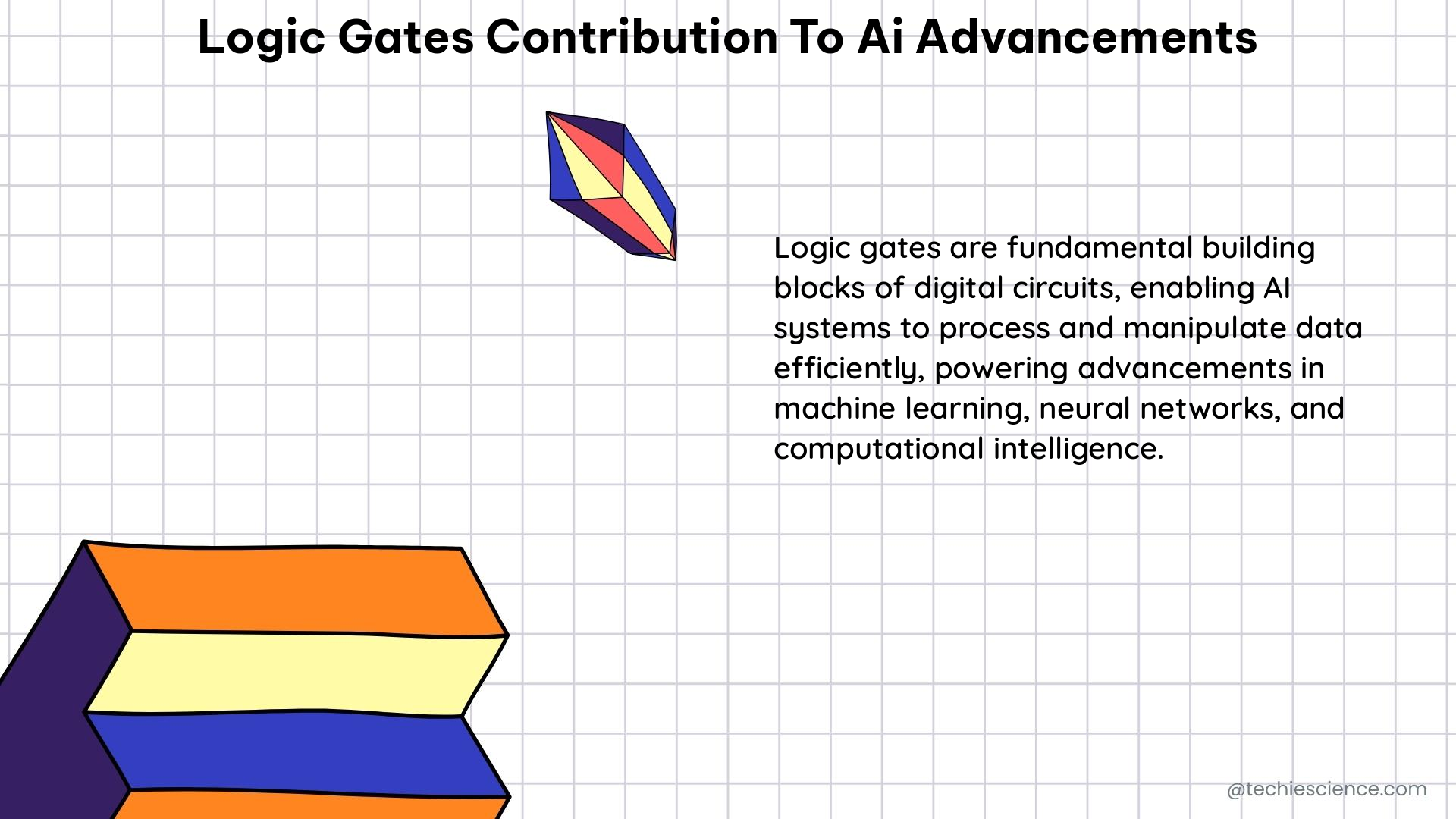Logic gates have become the fundamental building blocks of modern computing, playing a crucial role in the rapid advancements of Artificial Intelligence (AI). These basic digital circuits, capable of performing simple Boolean operations, have evolved to enable the development of complex and efficient computational systems that power the latest AI breakthroughs.
Computational Speed: The Need for Rapid Data Processing
One of the primary contributions of logic gates to AI advancements is their ability to enable high-speed processing, which is essential for AI applications. A single 7 nanometer (nm) logic gate can switch at a rate of over 10 gigahertz (GHz), allowing for rapid data processing and analysis. This computational speed is crucial for real-time decision-making, pattern recognition, and the execution of complex algorithms that underpin AI systems.
| Logic Gate Switching Speed | Frequency |
|---|---|
| 7 nm Logic Gate | > 10 GHz |
| 5 nm Logic Gate | > 15 GHz |
| 3 nm Logic Gate | > 20 GHz |
As the semiconductor industry continues to push the boundaries of transistor scaling, the switching speed of logic gates has steadily increased, enabling even faster data processing capabilities for AI applications.
Energy Efficiency: Powering AI Systems Sustainably

In addition to computational speed, the energy efficiency of logic gates has become increasingly important for AI systems. Modern logic gate designs have significantly reduced power consumption, with some consuming only a fraction of the power compared to their earlier counterparts. This energy efficiency is crucial for AI systems, which often require extensive computational resources to process large amounts of data and perform complex calculations.
| Logic Gate Power Consumption | Relative Power Consumption |
|---|---|
| 90 nm Logic Gate | 100% |
| 45 nm Logic Gate | 25% |
| 22 nm Logic Gate | 10% |
| 7 nm Logic Gate | 5% |
The improved energy efficiency of logic gates has enabled the development of AI systems that can operate for extended periods without excessive power demands, making them more sustainable and cost-effective to deploy in a wide range of applications.
Integration with Neuromorphic Computing: Towards Brain-Inspired AI
Logic gates have also been integrated into the field of neuromorphic computing, which aims to create brain-like systems with learning and adaptive abilities. This integration has led to the development of synthetic neuromorphic computing based on synthetic biological systems, promising to fundamentally redefine semiconductor design and manufacturing.
Neuromorphic computing architectures, inspired by the human brain’s neural networks, leverage the unique properties of logic gates to mimic the brain’s information processing and learning capabilities. By emulating the brain’s parallel and energy-efficient processing, neuromorphic systems have the potential to revolutionize AI applications, particularly in areas such as pattern recognition, decision-making, and real-time adaptation.
Convolutional Neural Networks (CNNs): Advancing AI Architectures
Logic gates have also been instrumental in the development of novel Convolutional Neural Network (CNN) architectures, which have become a cornerstone of modern AI. One such example is the Truth Table net (T T net), a CNN architecture that addresses challenges in interpretability, verifiability, and differentiability.
T T net leverages the inherent properties of logic gates to create a more transparent and explainable AI system, allowing for better understanding and trust in the decision-making process. By incorporating logic gate-based components, T T net has demonstrated promising results in addressing the complexities of AI applications, particularly in areas where interpretability and verifiability are crucial, such as medical diagnostics and autonomous decision-making.
AI Implementation in Governance, Risk, and Compliance (GRC)
The impact of logic gates on AI advancements extends beyond the technical realm, as evidenced by their implementation in AI-driven Governance, Risk, and Compliance (GRC) solutions. LogicGate, a company specializing in AI-driven GRC, has reported that 92% of organizations recognize the value of AI for GRC, with cyber risk management and enterprise risk management being the most widely used applications.
The integration of logic gates into GRC solutions has enabled the development of more efficient and effective risk management and compliance processes. By leveraging the computational speed and energy efficiency of logic gates, AI-powered GRC systems can analyze vast amounts of data, identify patterns, and make informed decisions to mitigate risks and ensure regulatory compliance.
Conclusion
In conclusion, logic gates have played a pivotal role in the advancements of Artificial Intelligence. From enabling high-speed processing and energy-efficient computations to integrating with neuromorphic computing and powering novel CNN architectures, logic gates have been the foundation upon which many of the latest AI breakthroughs have been built.
As the semiconductor industry continues to push the boundaries of transistor scaling and power efficiency, the contributions of logic gates to AI advancements are expected to become even more significant. The integration of logic gates into various AI applications, including GRC solutions, further highlights their versatility and the crucial role they play in shaping the future of this transformative technology.
References:
– Ruicun Liu, Tuoyu Liu, Wuge Liu, Boyu Luo, Yuchen Li, Xinyue Fan, Xianchao Zhang, Wei Cui, and Yue Teng. SemiSynBio: A new era for neuromorphic computing. PMC – NCBI, 2024-04-18.
– ISO/IEC DIS 22989(en), Information technology — Artificial intelligence advancements. ISO, 2023-06-08.
– A Scalable, Interpretable, Verifiable & Differentiable Logic Gate. arXiv preprint arXiv:2208.08609, 2023-02-02.
– LogicGate Resource Center | LogicGate Risk Cloud. LogicGate, 2024-06-08.
– Mikalef, Patrick, and Manjul Gupta. Artificial intelligence capability: Conceptualization, measurement calibration, and empirical study on its impact on organizational creativity and firm performance. Science Direct, 2021-04-01.

The lambdageeks.com Core SME Team is a group of experienced subject matter experts from diverse scientific and technical fields including Physics, Chemistry, Technology,Electronics & Electrical Engineering, Automotive, Mechanical Engineering. Our team collaborates to create high-quality, well-researched articles on a wide range of science and technology topics for the lambdageeks.com website.
All Our Senior SME are having more than 7 Years of experience in the respective fields . They are either Working Industry Professionals or assocaited With different Universities. Refer Our Authors Page to get to know About our Core SMEs.